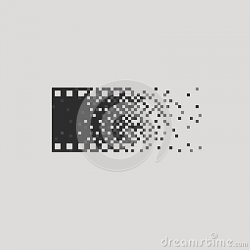Zeros and Ones vs. “The real thing” – by Neil Baldwin
Posted in: Director's Essay

At first glance, does it appear contradictory that the Director of a virtual Center should express ambivalence about its medium?
I have remarked before that the Web does not care what I think of it; the Web continues to extend its fibers exponentially; new blogs are born, flourish, diminish and die.
Every month or so, I am moved to set down my ideas in this space, consonant with the mission of The Creative Research Center, and my columns begin self-referentially. If I were just writing per se, it would be with a different voice, because there would be less of an omnipresent other out there. It’s the difference between writing on paper with the door closed, and writing with pixels with the door open.
Part of this distinction is generational: My students have no basis for comparison. To them, writing is inputting, so they are not media-conflicted, except when I ask them if they would rather forget about coming to class and merely stay in the dorm and check in with me remotely. Oh no, they protest with vehemence, we need to get out of our rooms — and be with other people.
This glaring midpoint of the summer – the farther shore of spring classes receded out of sight behind me, the fall semester promontory still beyond range – is the natural spawning-ground for idealistic ruminations.
For example: The academic culture in America today is supposed to be in turmoil, but it does not feel akin to the social unrest my generation experienced four decades ago. The current disturbance, as my headline intimates, resides rather in the constantly-shifting frame of how information and knowledge are delivered, and to whom. A new crisis in the humanities has arrived this summer. Defined through acerbic commentary in the Wall Street Journal, and dire reports from Harvard University, the Chronicle of Higher Education, and the American Academy of Arts & Sciences, the crisis is spurred by widespread skepticism about the value of humanities degrees “rendered [supposedly] obsolete” in a warp-speed global culture desperate for marketable technical skills.
To which I respond that as I look back upon my lifetime of immersion in the humanities and the arts — digital and analog — they have provided me with not so much an arsenal of specific facts as a mentality that continues to be more open and permeable as I get older. When I entered the Academy as a latecomer half a dozen years ago, I was worried that in becoming confined to a college and a specialty within the University, I would sacrifice my habitual eclectic pleasures.
Much to my relief and delight, I am more interested in what the other people around me are doing than ever before.
This past academic year was also the year I realized that my so-called course load was inaccurately expressed. I do not teach three courses in a semester; I teach sixty-five individual students. Sixty-five individual human beings.
And teaching, for that matter, is likewise a term that has outlived its usefulness. It strikes me as unadorned and one-directional. We educators in arts and humanities are going through an upheaval questioning the micromanaged viability of disciplines.
Despite my belonging to a department, I do not think of myself as teaching a subject; rather, I try to convey my hunger and enthusiasm so that students will become emotionally engaged and thereby convinced of the enduring uses of all learning.
I remind my students that at the root of “the humanities” resides the spirit of inquiry that makes us human. This spirit has weathered many crises.
